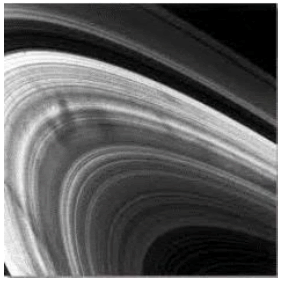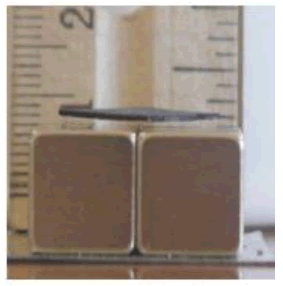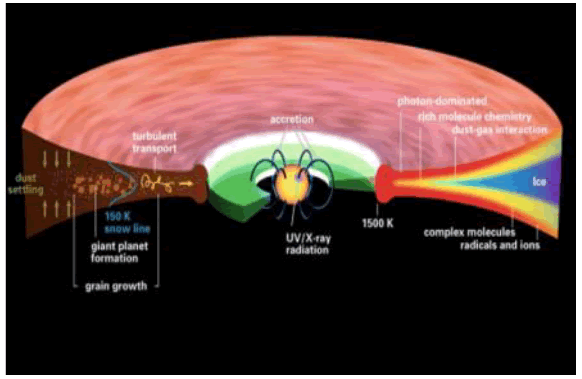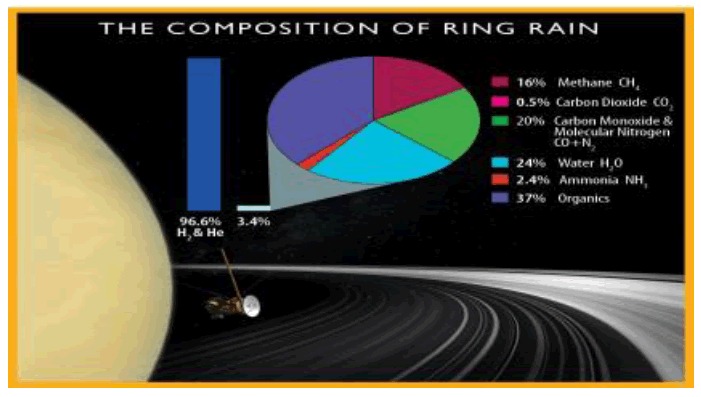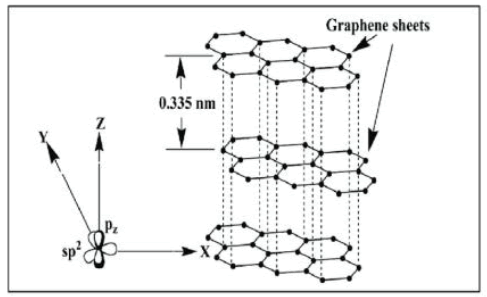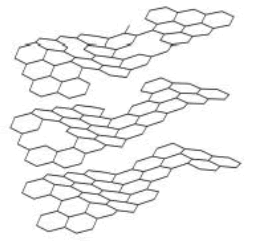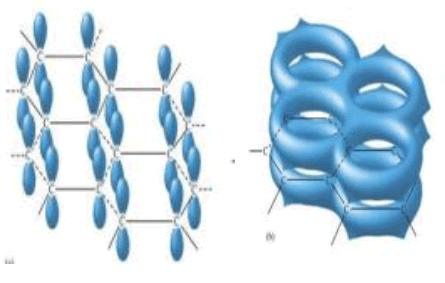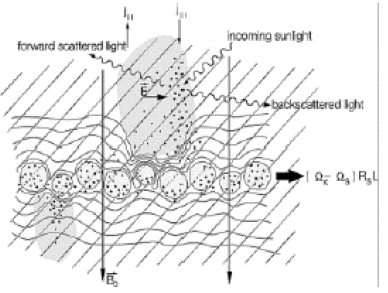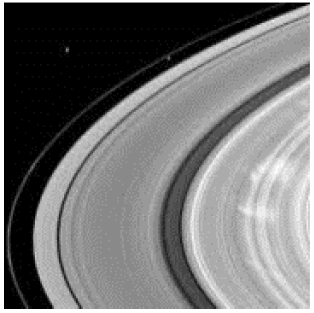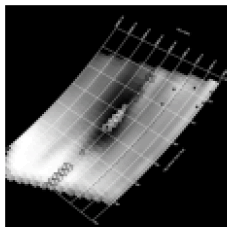Research
, Volume: 11( 2) DOI: 10.37532/2320-6756.2023.11(2).324An Alternative Explanation of the 'Spokes' Observed in Saturn's Rings
- *Correspondence:
- Fenton J. Doolan
Independent Researcher, Secondary Teacher + HoD Science, Australia
E-mail: fenton.doolan@glasshouse.qld.edu.au
Received date: 13-February-2023, Manuscript No. tspa-23-89317; Editor assigned: 15-February-2023, PreQC No. tspa-23-89317 (PQ); Reviewed: 22-February-2023, QC No. tspa-23-89317 (Q); Revised: 24-February-2023, Manuscript No. tspa-23-89317 (R);Published: 26-February-2023, DOI. 10.37532/2320-6756.2023.11(2).324
Citation: Doolan F J. An Alternative Explanation of the ‘Spokes’ Observed in Saturn’s Rings.2023;11(2):324.
Abstract
Observed first by amateur astronomer Stephen J. O’Meara in the 1970s and then subsequently observed by the Voyager Spacecraft flybys in the early 1980s (FIG. 1), it was realized that the ‘spokes’ flare out like spokes on a bicycle wheel. The observed behavior of the ‘spokes’ indicates that they are not governed by gravitational interactions with the planet, moons, or ring material. In 2005 the Cassini probe confirmed that the ‘spokes’ are likely under the influence of the gas giant’s global magnetic field. Here we show the ‘spokes’ that appear in Saturn’s rings consist of grains of silicates coated in pyrolytic carbon through the process of Chemical Vapor Deposition (CVD). Pyrolytic carbon is a highly diamagnetic substance that can levitate above a sufficiently strong magnetic field. The ‘spokes’ also consist of ice particles that are diamagnetic as well. The photoelectric effect can be used to explain why the silicates coated in pyrolytic carbon return to the main ring structure when exposed to sunlight of a specific frequency. The pyrolytic carbon grains become paramagnetic when some of the unhybridised 2pz orbitals lose their unpaired delocalized electrons, thus collapsing the π bond molecular orbital structure. The pyrolytic carbon grains are now attracted towards the magnetic field emanating above and below the main ring structure. It is suggested that the ‘spokes’ in Saturn’s B ring are always present and that no plasma triggering event is required to increase plasma density. The ‘spokes’, however, are only visible when a favorable viewing angle is allowed, and their visibility is also dependent on the angle of the sunlight hitting Saturn’s rings.
Keywords
Diamagnetic; Photoelectric effect
Introduction
Various models have been proposed to explain the appearance of the ‘spokes’ observed in Saturn’s rings. The most widely accepted model purports that meteorite bombardment of the rings produces a transient cloud of dense plasma that charges the dust, causing the dust to levitate above and below the plane of the rings [1, 2]. It is theorized that the ‘spokes’ are created by resonate interactions between the oscillations within the rings and the rotating magnetosphere FIG. 1 [3].
Figure 1: Voyager’s image of the spokes [4].
Another model (Jones, 2006) suggests that the ‘spokes’ may be produced by lightning-induced electron beams striking the rings, at locations magnetically connected to thunderstorms. The researchers suggest that Saturn’s ionospheric density controls the location of the ‘spokes’ formation. Electron beam propagation to the rings may produce the observed X-ray emissions and supply particles to Saturn radiation belts, thus modifying the rings’ composition over time [5]. Scientists (Goertz, 1984) suggest that the ‘spokes’ in Saturn’s rings are formed by electrostatically charged dust particles that are suspended in Saturn’s magnetic field [6]. As such these particles rotate in sync with the planet rather than its ring particles which display Keplerian motion about Saturn. At times, due to the angle of incoming sunlight, these electrostatically charged dust particles lose their electrostatic charge and fall back into the main ring structure hence the ‘spokes’ disappear at times. The ‘spokes’ have been observed by the Cassini spacecraft to be able to form on a time scale of minutes and fade away in a few hours [7].
Hypothesis
The small percentage of carbon that constitutes Saturn’s rings is diamagnetic pyrolytic carbon. During the formation of Saturn’s protoplanetary disk, it is hypothesised, that pyrolytic carbon would have been deposited via Chemical Vapour Deposition (CVD) of hydrocarbon gases such as methane, onto fine grains of silicates which acted as a substrate. These fine grains of silicates coated in pyrolytic carbon can levitate above or below a strong magnetic field due to pyrolytic carbon being highly diamagnetic. It is also suggested that Saturn’s B ring has a sufficiently strong magnetic field emanating orthogonally above and below its plane to levitate these pyrolytic carbon grains.
Justification of Hypothesis
In the laboratory it has been demonstrated that diamagnetic pyrolytic carbon levitates above a sufficiently strong magnetic field, see (FIG. 2).
Figure 2: Levitating pyrolytic carbon [8].
Pyrolytic carbon is a man-made substance, but it is predicted that Saturn’s rings consist of a small percentage of pyrolytic carbon. This type of carbon is formed in a vacuum at high temperatures of above 1400K, this process is known as flash vacuum pyrolysis. The dark ‘spokes’ which are observed in Saturn’s B ring consist of levitating particles that transition periodically from motion in sync with the rotation of Saturn’s magnetic field to normal Keplerian motion within the main ring. The dark ‘spokes’ are only observed in Saturn’s B ring which corresponds to the 1500 K region in the protoplanetary disk formation (FIG. 3).
Figure 3: Protoplanetary disk formation [10].
Research
Research (Henning et al. 2013) suggests that during Saturn’s formation the innermost parts of its protoplanetary disk would have reached these temperatures. In the protoplanetary diagram below (FIG. 3), the 1500K region would correspond to Saturn’s B ring, which is why the dark ’spokes’ are only observed in this ring. The temperature beyond the 1500K region would be too cold, so no dark ’spoke’ formation would be observed beyond Saturn’s B ring [9].
"Saturn’s ring system is the closest thing we have to the disc of dust and rubble that gave birth to Earth and the other planets 4.55 billion years ago. The protoplanetary disc took shape when a spherical cloud of ultra-cold gas and dust began to collapse under its own gravity. As the spinning cloud shrank, it took the form of a disc, swirling around the newborn sun. Once the sun had blown away the gas, the disc of orbiting rubble would have resembled the disc of Saturn’s ring system” says Professor Carl Murray [11].
Protoplanetary disk surface temperatures, masses, and rate of mass in fall onto the disks can be estimated by observations of suspected planet-forming disks. The solar nebula’s temperature is constrained to locations and times as suggested by the ongoing analysis of the formation of primitive meteorites, comets, and their components. Disk temperatures are in good agreement with theoretical models of disks undergoing accretion of mass due to an infalling cloud envelop. As such, the predicted temperatures on the inner disk are a moderately warm (500–1500K) inner disk, surrounded by a cool (50 K-150 K) outer disk [12].
When thinking of the planet Saturn, one would naturally associate very cold temperatures with the planet, thus having the required temperature of 1500 K to form pyrolytic carbon would be unlikely. However, recent data (Fukuhara, 2020), suggests that Saturn’s core is actually very hot. Saturn’s molten rocky metallic core has an estimated temperature of 12200oC [13]. Thus making Saturn’s core hotter than the surface of the Sun.
Saturn’s ‘Ring Rain’ Chemical Composition
Hydrocarbons such as methane can be converted to pyrolytic carbon at temperatures above 1400K as indicated in equation (1) below. Research (Spilker, 2019), also indicates that the Cassini mission found an abundance of various hydrocarbons in the 'rain' produced by Saturn’s rings. FIG. 4 represents the composition of ‘ring rain’ produced by Saturn’s rings [14]. It should be noted that silicates were also detected in the ‘ring rain’ which FIG. 4 neglects to show.
Figure 4: Composition of ring rain [15].

The researchers found methane, ammonia, carbon monoxide, molecular nitrogen, and carbon dioxide. The methane was totally unexpected, as was the carbon dioxide. What the researchers were expecting was a lot more water ice. Molecular hydrogen was the most abundant constituent at all altitudes sampled. Water in fall from the rings was observed, along with substantial amounts of methane, ammonia, molecular nitrogen, carbon monoxide, carbon dioxide, and impact fragments of organic nanoparticles [16]. The downpour from the rings included large amounts of water and hydrocarbons such as butane and propane [17].
Pyrolysis and Gasification
Syngas, also called a synthesis gas, is a mix of molecules containing hydrogen, methane, carbon monoxide, carbon dioxide, water vapors, as well as other hydrocarbons and condensable compounds. It is a main product of gasification and majority product of high temperature pyrolysis carried on any biomass, residues, and waste. When produced in pyrolysis, it is created by the vaporization of volatile compounds from the raw material using heat, which sets off a series of complex reactions. Gases from pyrolysis typically contain large amounts of methane, hydrogen, carbon monoxide, and carbon dioxide, as well as larger hydrocarbons that build their calorific value and make them important fuel for the chemical and energy industries [18]. Gasification is a process that converts biomass into gases, producing large quantities of: nitrogen, carbon monoxide, hydrogen, and carbon dioxide. This is achieved by reacting the biomass at high temperatures (typically greater than 700 ͦC without combustion, via controlling the amount of oxygen and/or steam present in the reaction. The resulting syngas is highly flammable fuel due to the large quantities of water and carbon monoxide which the gas is largely composed of. Further reactions occur between the carbon monoxide and residual water from the organic material to form methane and excess carbon dioxide, equation (2) [19].

In gasification, reforming is a means to enhance the proportion of hydrogen by decomposing the hydrocarbons into carbon monoxide and hydrogen, equation (3). If the biomass is already made of hydrocarbons, reforming is the first stage towards syngas.

The chemical processes of pyrolysis and gasification may explain where the ice and other constituents of Saturn’s rings originated from. Thus, Robin Canup’s hypothesis that Saturn’s rings were formed when a Titan-sized moon with a rocky core and an icy mantle spiralled into Saturn may not be required [20].
Diamagnetism
The diamagnetic properties of a material are determined by a property called magnetic susceptibility, χ. The relationship between magnetic susceptibility and magnetic permeability is expressed in equation (4). A diamagnetic material has a magnetic susceptibility of less than zero and a minimum value of -1:

μv is the magnetic permeability of the material. Superconductors are the most diamagnetic material (-1.04×10-3) followed by pyrolytic carbon (-4.09×10-4) then bismuth (-1.66×10-4) see TABLE 1.
TABLE 1 Diamagnetic materials [21].
| Materials | Diamagnetic Strength × 10-5 SI Units |
|---|---|
| Superconductor | -105 |
| Pyrolytic carbon | -40.9 |
| Bismuth | -16.6 |
| Mercury | -2.9 |
| Silver | -2.6 |
| Carbon(diamond) | -2.1 |
| Lead | -1.8 |
| Carbon(graphite) | -1.6 |
| Copper | -1.0 |
| Water | -0.91 |
Diamagnetic forces induced in materials by a magnetic field have a very different behavior from inverse-square law forces. The diamagnetic force depends on the gradient of the squared magnetic field as shown in equation (5):

where, V is the volume of the diamagnetic material, μ0 is the vacuum magnetic permeability and B is the magnetic field [22].
Magnetic Susceptibility of Pyrolytic Carbon
Pyrolytic carbon which is highly diamagnetic may explain the dark ‘spokes’ observed in Saturn’s rings. Because pyrolytic carbon is so diamagnetic (repelled by a magnetic field) none of it would have been detected in the ‘ring rain’ falling from Saturn’s rings to its atmosphere. It is suggested that the dark ‘spokes’ are fine grains of silicates that have been covered in pyrolytic carbon due to the process of flash vacuum pyrolysis during the formation of Saturn. Pyrolytic carbon is the best-known material that displays the most similar properties to superconducting materials i.e diamagnetism. Strong variations in ion density in Saturn’s electrically charged atmosphere produce strong coupling in the visible rings which consists mainly of electrically charged ice particles [23]. Saturn’s rings are therefore electrically charged and thus must produce an electric field. Mitchell et al. 2006 state: “Because of the charging of the ring and the resulting electric field, the electron and ion densities immediately above the ring will not be equal” [2]. Since Saturn’s rings are electrically charged with an associated electric field, it is proposed that the rings must emanate a magnetic field orthogonally above and below the ring plane. As such, Saturn’s rings can be considered to be an electromagnetic phenomenon, as also suggested by Professor Vladimir Tchernyi [24]. The ring’s magnetic fields enable the fine grains of silicates covered in pyrolytic carbon to levitate above and below the main ice-ring structures due to their highly diamagnetic nature, thus producing the observed dark and bright ‘spoke’ structures that rotate in sync with the rotation of Saturn’s magnetic field. Analysis of the spectral radiation power of the spokes provides a specific periodicity of about 640.6 +/- 3.5 min which almost coincides with the period of rotation of the magnetic field of Saturn (639.4 min). Professor Tchernyi states: “Moreover, a strong correlation between the maxima and minima of activity of the spokes with the spectral magnetic longitudes is connected to the presence or absence of the radiation of Saturn’s Kilometric Radiation (SKR)” [25]. The dark ‘spokes’ are most visible at the two seasonal equinoxes as the illumination of the rings is greatly reduced making possible unique observations highlighting features that depart from the ring plane i.e the levitated fine grains of silicates covered in pyrolytic carbon. The dark ‘spokes’ become visible mainly due to two reasons[26]. The first is due to planet shine from Saturn which reflects off the ice particles in the rings but is absorbed by the fine grains of silicates covered in pyrolytic carbon during the seasonal equinoxes. Hedman (2017) states: “We will highlight the importance of including illumination sources other than the Sun in the radiative transfer analysis, namely the Saturn-shine and the ring-shine” [27]. Secondly, due to an increase in plasma density caused by the reduced illumination of Saturn’s rings at the equinoxes, allowing the silicates coated in pyrolytic carbon to become ‘recharged’. Thus regaining their diamagnetic properties, enabling them to levitate above and below Saturn’s B ring plane. In 2012, a research group in Japan (Kobayashi, 2012) demonstrated that pyrolytic carbon can respond to laser light or sufficiently powerful natural sunlight by spinning or moving in the direction of the field gradient. The carbon’s magnetic susceptibility weakens upon sufficient illumination, leading to an unbalanced magnetization of the material and movement when using a specific geometry [28]. This may explain why the dark ‘spokes’ in Saturn’s rings appear seasonally at the equinoxes when the illumination from the sun is at a minimum. Hence the pyrolytic carbon grains levitate above and below the main ring. Illumination from the sun causes a weakening of the pyrolytic carbon’s magnetic susceptibility, causing the pyrolytic carbon grains to return back to the main ring.
Hybridisation of Carbon
During the process of Chemical Vapor Deposition (CVD) of methane gas the carbon atoms would share the hybridized sp2 electrons with their three neighboring carbon atoms (FIG. 5). Thus, forming a layer of honeycomb network of planar structure (1200 bond angle), which is also known as monolayer graphene. In pyrolytic carbon, these monolayers would form a turbostratic structure i.e. the graphene layers are arranged without order but have some covalent links between the layers (FIG. 6). When sunlight of a specific frequency hits the surface of the pyrolytic carbon grains the delocalized π electrons in the molecular orbital created by the overlap of the unhybridised 2pz orbitals collapse due to a decrease in electron density caused by electron ejection via the photoelectric effect (FIG. 7 a,b).
Figure 5: The formation of sp2 hybrid orbitals [29].
Figure 6: Turbostratic structure of graphene monolayer [30].
Figure 7a: Valence bond theory 2pz orbital depiction. FIG. 7b. π molecular orbital depiction [31].
According to valence bond theory, the unhybridised 2pz orbitals will be vacant or will have an unpaired electron, thus making the pyrolytic carbon grains highly paramagnetic. The pyrolytic carbon grains are now attracted towards the magnetic field emanating from Saturn’s B ring. After returning back to the main ring structure the pyrolytic carbon grains become ‘recharged’ when the plasma density reaches a maximum, this occurs when the sun’s illumination of the rings is at a minimum i.e. at the equinoxes. The unhybridised 2pz orbitals are now able to re-establish their π molecular orbital structure due to the increase in electron density. Due to electromagnetic induction, the electrons in the π bond become highly diamagnetic.
Electromagnetic Induction
The silicates coated in pyrolytic carbon become diamagnetic when exposed to the strong magnetic field emanating orthogonally from Saturn’s B ring plane. Due to the process of electromagnetic induction, a changing magnetic flux is produced in the delocalized electrons in the pyrolytic carbon’s π molecular orbitals. Faraday’s Second Law of Electromagnetic Induction equation (6) stipulates that there will be an EMF induced in the electrons in the 2pz unhybridized orbitals which will tend to oppose the changing magnetic flux according to Lenz’s law, equation (7). Faraday’s second law of electromagnetic induction requires that the induced EMF to be equal to the rate of change of flux linkage. Faraday’s Second Law of Electromagnetic Induction states,

Hence Lenz’s Law states,

where ε is the induced EMF, N is the number of spin-orbits, ΔΦ is the change in magnetic flux and Δt is the change in time. Thus, there will be an EMF induced that tends to oppose the magnetic field. The EMF will induce a larger current in some of the 2pz delocalized electron’s spin-orbits compared to other 2pz delocalized electrons which have opposing spin-orbits. The resulting effect is that the magnetic moments now do not cancel out. Thus, making all the 2pz delocalized electrons in the pyrolytic carbon act like tiny magnets, consequently, the pyrolytic carbon grains will be highly diamagnetic and will be repelled by the magnetic field emanating above and below Saturn’s B ring.
Discussion
Only when the sun is at the equinoxes resulting in the illumination of the rings to be at a minimum, does the plasma density above and below Saturn’s rings reach a maximum. As such no triggering mechanism such as lightning is required to increase the plasma density above or below the ring plane is required. Due to the increased plasma density the 2pz unhybridised orbitals are able to gain electrons reestablishing the π molecular orbitals on the surface of the pyrolytic carbon. Through the process of electromagnetic induction the pyrolytic carbon grains become highly diamagnetic causing them to levitate above and below Saturn’s B ring. The dark ‘spokes’ in Saturn’s B ring become visible due to the backscattering of light (FIG. 8). This proposed mechanism suggests that Saturn’s B ring produces a magnetic field that emanates orthogonally above and below its ring plane. The bright ‘spokes’ in (FIG. 9), are visible on the unilluminated side of Saturn’s rings when the sun’s illumination of the rings is at a maximum (directly below or above the ring plane). The bright ‘spokes’ can be explained due to the forward scattering of light caused by the grains of pyrolytic carbon which levitate above the plane of Saturn’s rings.
Figure 8: Forward and backscattering of light [33]
Figure 9: Bright spokes in Saturn’s Bring observed by Cassini [32].
The bright ‘spokes’ which appear on the illuminated side of Saturn’s rings may be due to the sunlight reflecting off the small, levitated ice particles. These small ice particles are also diamagnetic but unlike the silicates covered in pyrolytic carbon, they remain unaffected by natural sunlight i.e. they are not magnetically susceptible to natural sunlight as the photoelectric effect will not occur, so they remain levitated above Saturn’s main rings. Hence, the bright ‘spokes’ should always be observable given sufficient illumination by the sun and the correct angle of observation by the observer. The bright ‘spokes’ may suddenly disappear when the illumination of the sun reaches a critical point, causing the levitated ice particles to sublimate due to the sunlight’s intensity.
Cassini / VIMS Spectrometer
The first detection of ‘spokes’ in Saturn’s B ring occurred in July 2018 using Cassini’s VIMS spectrometer. A wide spectral rangem (0.35 μm-0.51 μm) was used to measure the first complete reflectance spectrum of multiple ‘spokes’ (FIG. 10). The spectrum obtained indicates that the ‘spokes’ consist of spheroidal water ice particles. These ice particles have a wide size distribution centered on a modal radius of approximately 1.90 μm, which is significantly larger than previously modelled. It has been verified by spectral analysis that the bright ‘spokes’ on the illuminated side of Saturn’s rings are water ice particles. The spectral analysis of the rings showed that H2O dominates in the near-IR. However, there was a steep decline in the reflectance short ward of approximately 0.6 μm, which must be due to some other substance [27].
Figure 10: Cassini/VIMS spectral image of a spoke [34]
Recent studies Ciarniello et.al, 2019 of the rings’ visible and near-IR spectra have identified tholins-reddish, organic-rich, refractory materials as a possible contaminant responsible for the distinctly reddish color of the rings at visual wavelengths [35]. Cuzzi and Estrada (1998) in a study of the color of Saturn’s rings, found a material that produces a distinct red colour produced in the particles in the A and B rings. They note that “No silicates have the appropriate combination of steep spectral slope and high absorptivity to explain the rings’ visual color while remaining compatible with microwave observations.” Titan tholin matches the colors and albedos of the particles when incorporated into the water ice grains. They suggest that the darker rings possibly contain “material with properties like carbon black, as seen in at least some comets and interplanetary dust particles, is needed” [36]. Modelling by Poulet and Cuzzi (2002) and Poulet et al. (2003) suggest a mixture of tholins and amorphous carbon to achieve fits to the observational data in the 0.3 μm-4.0 μm range [37]. Poulet et al. 2003, concluded further that, for the A and B rings, while the carbon grains are intimately mixed in a “salt and pepper” fashion with the ice, the tholins are mixed at the molecular level within the ice grains themselves [38].
Cruikshank et al., 2005 suggest that tholins exhibit relatively few and weak absorption features in the VIMS near-IR region except at wavelengths near 3.0 μm and 4.5 μm where water ice is also highly absorbing as shown in (FIG. 10) [39].No dark ‘spokes’ will be observable on the underneath side of Saturn’s B ring due to the illumination from the sun causing the pyrolytic carbon grains to move back to the main ring due to the photoelectric effect. The pyrolytic carbon grains lose some of their delocalized unhybridised 2pz electrons thus becoming paramagnetic. Now the pyrolytic carbon grains can move back to the main ring due to being attracted to the magnetic field. The dark ‘spokes’ become visible only at the equinoxes due to the sun’s minimum level of illumination of the rings and backscattering of light. The plasma density above and below Saturn’s B ring increases to a maximum causing the pyrolytic carbon 2pz orbitals to be ‘recharged’ i.e. gain electrons. Thus, the pyrolytic carbon grains can reform their π molecular orbitals and regain their highly diamagnetic nature, enabling them to levitate above and below Saturn’s B ring plane.
Conclusion
The chemical process of flash vacuum pyrolysis has converted hydrocarbons such as methane to pyrolytic carbon at temperatures above 1400 K during the protoplanetary disk formation of Saturn. The pyrolytic carbon has coated the fine grains of silicates through the process of Chemical Vapor Deposition (CVD). The silicates coated in pyrolytic carbon are now able to levitate above or below the magnetic field emanating from Saturn’s rings, due to the highly diamagnetic nature of pyrolytic carbon. If some of the ‘spokes’ do consist of pyrolytic carbon then this would be proof that Saturn’s rings were formed after the collapse of the protoplanetary cloud during the formation of Saturn. Thus, the argument concerning the age of Saturn’s rings would therefore be put to rest once and for good. Depending on the angle and frequency of the sunlight hitting the fine grains of silicates coated in pyrolytic carbon the photoelectric effect will cause the ejection of some of the delocalized π electrons from the pyrolytic carbon’s molecular orbitals. This causes the pyrolytic carbon’s molecular orbitals to collapse into discrete unpaired 2pz unhybridised orbitals, thus becoming highly paramagnetic. The pyrolytic carbon grains will now return back to the main ring as they are attracted to the magnetic field emanating from Saturn’s B ring.
The dark ‘spokes’ in Saturn’s B rings are only observable at the equinoxes due to the minimum illumination of its rings by the sun. The bright ‘spokes’ should be visible when the sun is above or below the plane of Saturn’s rings. Therefore, it can be concluded that Saturn always has ‘spokes’ but their type either dark or bright depends on the position of the sun relative to Saturn and the angleat which the observer is observing the rings.
Saturn’s rings are an electromagnetic phenomenon as suggested by Russian Professor Vladimir Tchernyi. Saturn creates electromagnetic fields which encompass the equatorial region of the planet. These electromagnetic fields consist of magnetic fields which emanate orthogonally above and below the ring plane. Saturn’s rings are analogous to magnetic field lines produced in a laboratory using a neodymium magnet and iron filings. It is also predicted that the recent samples taken from the carbonaceous asteroids Bennu and Ryugu will contain a large quantity of pyrolytic ‘diamagnetic’ carbon. Further research is suggested concerning the processes of pyrolysis and gasification as possible chemical processes that may help to explain where all Earth’s water originated from.
Conflicts of Interest
The author declares there are no conflicts of interest in regard to this article.
References
- Bryan J. Stephen J. O'Meara and Ring Spokes Before Voyager 1. J. Astron. Hist. Herit. 2007;10:148-50.
[Google Scholar] [Crossref]
- Mitchell CJ, Horányi M, Havnes O, et al. Saturn's spokes: Lost and found. Science. 2006;311(5767):1587-9.
- Hartquist TW, Havnes O, Morfill GE. The effects of charged dust on Saturn's rings. Astron. Geophys. 2003;44(5):5-26.
- Cassini.Ghostly spokes in rings, NASA.2010
- Jones GH, Krupp N, Kr¨uger H, et al. Formation of saturn’s ring spokes by lightning-induced electron beams. Geophysical research letters. 2006;33(21). [Google Scholar] [Crossref]
- Goertz CK. Formation of Saturn's spokes. Adv. Space Res. 1984;4(9):137-41.
- Farmer AJ and Goldreich P. Spokes in saturn’s rings. In Am. Astron. Soc. Meet. Abstr, 2004;205:43–07. [Google Scholar] [Crossref]
- Stephen J. O'Meara and Ring Spokes Before Voyager 1
- Thomas Henning and Dmitry Semenov. Chemistry in protoplanetary disks. Chemical Reviews, 2013;113(12):9016-9042.
- Protoplanetary disk formation
- Chown M. Cassini: Lord of the rings. New Scientist. 2010;208(2789):40-1.
- Boss AP. Temperatures in protoplanetary disks. Annu. Rev. Earth Planet. Sci. 1998;26(1):53-80.
[Google Scholar] [Crossref]
- Fukuhara M. Possible nuclear fusion of deuteron in the cores of Earth, Jupiter, Saturn, and brown dwarfs. AIP Advances. 2020;10(3):035126.
- Spilker L. Cassini-Huygens’ exploration of the Saturn system: 13 years of discovery. Science. 2019;364(6445):1046-51.
- Composition of ring rain, National Geographic
- Waite Jr JH, Perryman RS, Perry ME, et al. Chemical interactions between Saturn’s atmosphere and its rings. Science. 2018;362(6410):eaat2382.
- Perry M, Waite H, Perryman R, et al. The flow of material inward from Saturn's rings. InEGU Gen. Assem. Conf. Abstr. 2018:16834.
[Google Scholar] [Crossref]
- Rostrup-Nielsen J, Christiansen LJ. Concepts in syngas manufacture. World Scientific; 2011.
[Google Scholar] [Crossref]
- Heidenreich S, Foscolo PU. New concepts in biomass gasification. Prog. energy combust. sci., 2015;46:72-95.
- Canup RM. Origin of Saturn’s rings and inner moons by mass removal from a lost Titan-sized satellite. Nature. 2010 Dec;468(7326):943-6.
[Google Scholar] [Crossref]
- Diamagnetic materials
- Reis Guilherme. Thermal influence on the diamagnetic properties of pyrolytic graphite: Applications in space and high speed transportation. 2016. [Google Scholar] [Crossref]
- Wahlund JE, Morooka MW, Hadid L, et al. First In-Situ Determination of the Ionospheric Structure of Saturn by Cassini/RPWS. Saturn. 2017.
[Google Scholar] [Crossref]
- Tchernyi VV, Kapranov SV, Pospelov AY. Role of Electromagnetism in the Origin of Saturn’s Rings Due to Diamagnetism of Their Ice Particles: JC Maxwell Had Almost Solved the Rings Origin Problem. URSI Radio Sci. Lett. 2021;3:69.
- Tchernyi VV, Kapranov SV, Pospelov AY. Contribution of magnetism to the origin and stability of the rings of Saturn due to superconductivity of protoplanetary iced particles. arXiv preprint arXiv:2004.13212. 2020.
- D’Aversa E, Bellucci G, Filacchione G, et al. Ir spectra of saturn’s ring spokes and multiple shines in the saturn-rings system. In EGU Gen. Assem. Conf. Abstr,2017: 9140 [Google Scholar] [Crossref]
- E D’Aversa, G Bellucci, F Altieri, et al. Spectral characteristics of a spoke on the saturn rings. Memorie della Societa Astronomica Italiana Supplementi, 2011;16:7,.
[Google Scholar] [Crossref]
- Kobayashi M, Abe J. Optical motion control of maglev graphite. J. Am. Chem. Soc. 2012;134(51):20593-6.
- Aslam F, Farooq F, Amin MN, et al. Applications of gene expression programming for estimating compressive strength of high-strength concrete. Adv. Civ. Eng. 2020;2020:1-23.
- Farooq F, Akbar A, Khushnood RA. Effect of hybrid carbon nanotubes/graphite nano platelets on mechanical properties of cementitious composite. InProceedings 1st Conf. Sustain. Civ. Eng. 2019.
[Google Scholar] [Crossref]
- Turbostratic structure of graphene monomer
- Electrical Conductivity in Graphite
- The Mysterious Spokes
- D'Aversa E, Bellucci G, Nicholson PD, et al. The spectrum of a Saturn ring spoke from Cassini/VIMS. Geophys. res. lett. 2010;37(1).
- Ciarniello M, Filacchione G, D’Aversa E, et al. Cassini-vims observations of saturn’s main rings: Ii. a spectrophotometric study by means of monte carlo ray-tracing and hapke’s theory. Icarus, 2019;317:242–65. [Google Scholar] [Crossref]
- Cuzzi JN, Estrada PR. Compositional evolution of Saturn's rings due to meteoroid bombardment. Icarus. 1998;132(1):1-35.
- Poulet F, Cuzzi JN. The composition of Saturn's rings. Icarus. 2002;160(2):350-8.
- Poulet F, Cruikshank DP, Cuzzi JN, et al. Compositions of Saturn's rings A, B, and C from high resolution near-infrared spectroscopic observations. Astron. Astrophys. 2003;412(1):305-16.
- Cruikshank DP, Imanaka H, Dalle Ore CM. Tholins as coloring agents on outer Solar System bodies. Adv. Space Res. 2005;36(2):178-83.
